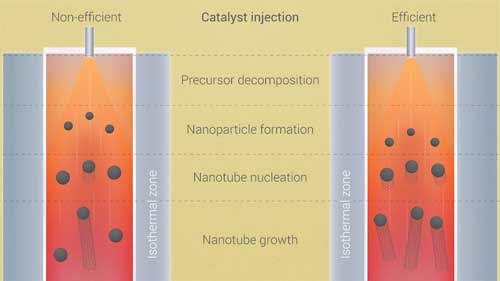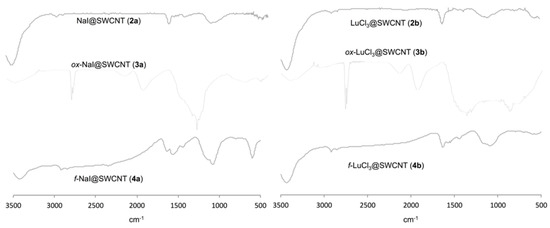

Along the length of the tube, thermal conductivity can be up to 9 times higher than materials such as copper. In addition to the electronic and mechanical properties of SWNTs, the thermal properties of these materials exhibit extreme anisotropy.

How the lattice parameters relate to the physical structure of carbon nanotubes. In addition to this ability to exhibit both metallic and semiconducting electronic structures carbon nanotubes offer exceptional charge carrier mobilities, this is due to the combination of the delocalisation of electrons across the lattice and the small dimensions in the radial axis constraining movement of charge carriers along the longitudinal axis of the tubes. Zig-zag and armchair carbon nanotubes exhibit metallic properties, whilst chiral nanotubes can be either metallic or semiconducting depending upon the difference between the n and m units. There are typically three types of nanotubes that can form, these are: the armchair (where n = m), zig-zag (n=x, m=0), and chiral (n=x, m=y).Ĭarbon nanotubes can exhibit either metallic properties or semiconducting properties, depending upon the orientation of the lattice. The image to the right shows how the n and m orientations relate to the longitudinal axis of the nanotube and the rotational axis. The lattice orientation is given by two parameters (n, m). The electrical properties of carbon nanotubes are dependent upon the orientation of the lattice. Along the radial axis, these values are a few orders of magnitude lower. The mechanical properties vary significantly depending upon the axis you are measuring with nanotubes having extremely high Youngs Moduli (Up to 1TPa) and tensile strength (Up to 100 GPa) along the longitudinal axis. Much like graphene, SWNTs have properties that differ considerably to those of bulk carbon (e.g. The combination of a simple method for producing SWNTs and the potentially extraordinary properties they exhibit kick-started the growth of a wider research community into carbon nanotubes. White on the predicted properties of SWNTs. Iijima on the fabrication of multi-walled carbon nanotubes via arc discharge, and ii) J.

Wider interest in these low-dimensional materials did not occur until 1991, when two articles were independently published by: i) S.
#CARBON NANOTUBES PRICE SERIES#
Endo synthesised a series of hollow carbon tubes via chemical vapour-growth. Lukyanovich in 1952, however, the first observations of SWNTs themselves were not until 1976 when M. The existence of thin, hollow carbon tubes has been known about since their first observations by L. SWNTs are sheets of graphene that have been rolled up to form a long hollow tube, with wall thickness of a single atom.


 0 kommentar(er)
0 kommentar(er)
